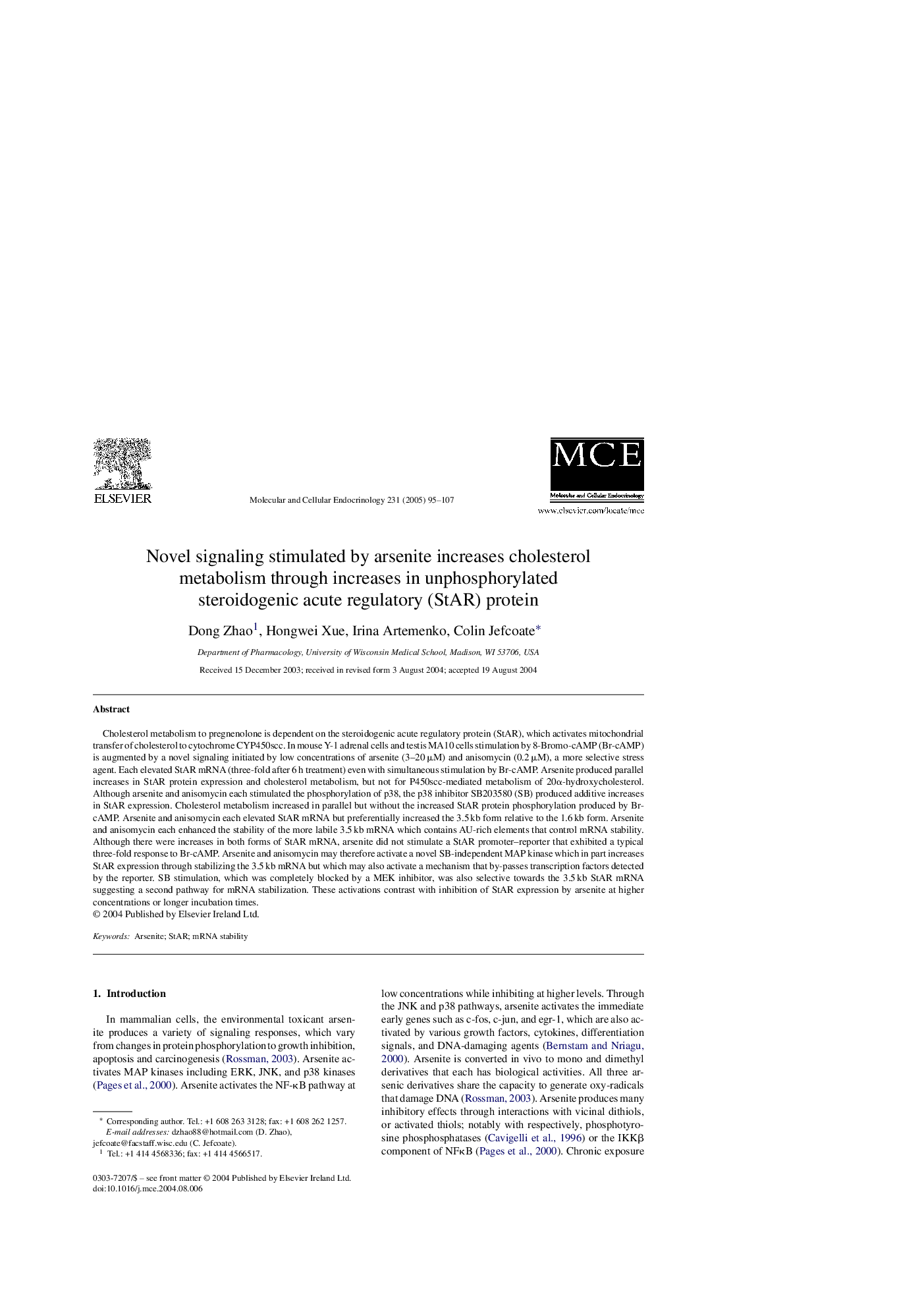| کد مقاله | کد نشریه | سال انتشار | مقاله انگلیسی | نسخه تمام متن |
|---|---|---|---|---|
| 9915025 | 1551026 | 2005 | 13 صفحه PDF | دانلود رایگان |
عنوان انگلیسی مقاله ISI
Novel signaling stimulated by arsenite increases cholesterol metabolism through increases in unphosphorylated steroidogenic acute regulatory (StAR) protein
دانلود مقاله + سفارش ترجمه
دانلود مقاله ISI انگلیسی
رایگان برای ایرانیان
موضوعات مرتبط
علوم زیستی و بیوفناوری
بیوشیمی، ژنتیک و زیست شناسی مولکولی
بیولوژی سلول
پیش نمایش صفحه اول مقاله

چکیده انگلیسی
Cholesterol metabolism to pregnenolone is dependent on the steroidogenic acute regulatory protein (StAR), which activates mitochondrial transfer of cholesterol to cytochrome CYP450scc. In mouse Y-1 adrenal cells and testis MA10 cells stimulation by 8-Bromo-cAMP (Br-cAMP) is augmented by a novel signaling initiated by low concentrations of arsenite (3-20 μM) and anisomycin (0.2 μM), a more selective stress agent. Each elevated StAR mRNA (three-fold after 6 h treatment) even with simultaneous stimulation by Br-cAMP. Arsenite produced parallel increases in StAR protein expression and cholesterol metabolism, but not for P450scc-mediated metabolism of 20α-hydroxycholesterol. Although arsenite and anisomycin each stimulated the phosphorylation of p38, the p38 inhibitor SB203580 (SB) produced additive increases in StAR expression. Cholesterol metabolism increased in parallel but without the increased StAR protein phosphorylation produced by Br-cAMP. Arsenite and anisomycin each elevated StAR mRNA but preferentially increased the 3.5 kb form relative to the 1.6 kb form. Arsenite and anisomycin each enhanced the stability of the more labile 3.5 kb mRNA which contains AU-rich elements that control mRNA stability. Although there were increases in both forms of StAR mRNA, arsenite did not stimulate a StAR promoter-reporter that exhibited a typical three-fold response to Br-cAMP. Arsenite and anisomycin may therefore activate a novel SB-independent MAP kinase which in part increases StAR expression through stabilizing the 3.5 kb mRNA but which may also activate a mechanism that by-passes transcription factors detected by the reporter. SB stimulation, which was completely blocked by a MEK inhibitor, was also selective towards the 3.5 kb StAR mRNA suggesting a second pathway for mRNA stabilization. These activations contrast with inhibition of StAR expression by arsenite at higher concentrations or longer incubation times.
ناشر
Database: Elsevier - ScienceDirect (ساینس دایرکت)
Journal: Molecular and Cellular Endocrinology - Volume 231, Issues 1â2, 28 February 2005, Pages 95-107
Journal: Molecular and Cellular Endocrinology - Volume 231, Issues 1â2, 28 February 2005, Pages 95-107
نویسندگان
Dong Zhao, Hongwei Xue, Irina Artemenko, Colin Jefcoate,